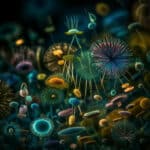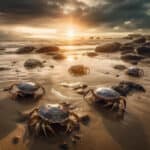Phytoplankton and zooplankton are two vital components of the marine food web. Phytoplankton, which are microscopic plants, play a crucial role in the ocean ecosystem by converting sunlight and nutrients into organic matter through photosynthesis. On the other hand, zooplankton are tiny animals that feed on phytoplankton and other organic matter. While it is well-known that zooplankton consume phytoplankton, the question of whether phytoplankton eat zooplankton is less clear. In this article, we will explore this intriguing topic and shed light on the interactions between these two important groups of organisms in the marine environment.
Key Takeaways
- Phytoplankton are microscopic plants that use sunlight to produce energy through photosynthesis.
- Zooplankton are small animals that feed on phytoplankton.
- While phytoplankton do not directly eat zooplankton, they form the base of the marine food chain and provide food for zooplankton and other organisms higher up in the food chain.
Understanding the Basics: Phytoplankton and Zooplankton
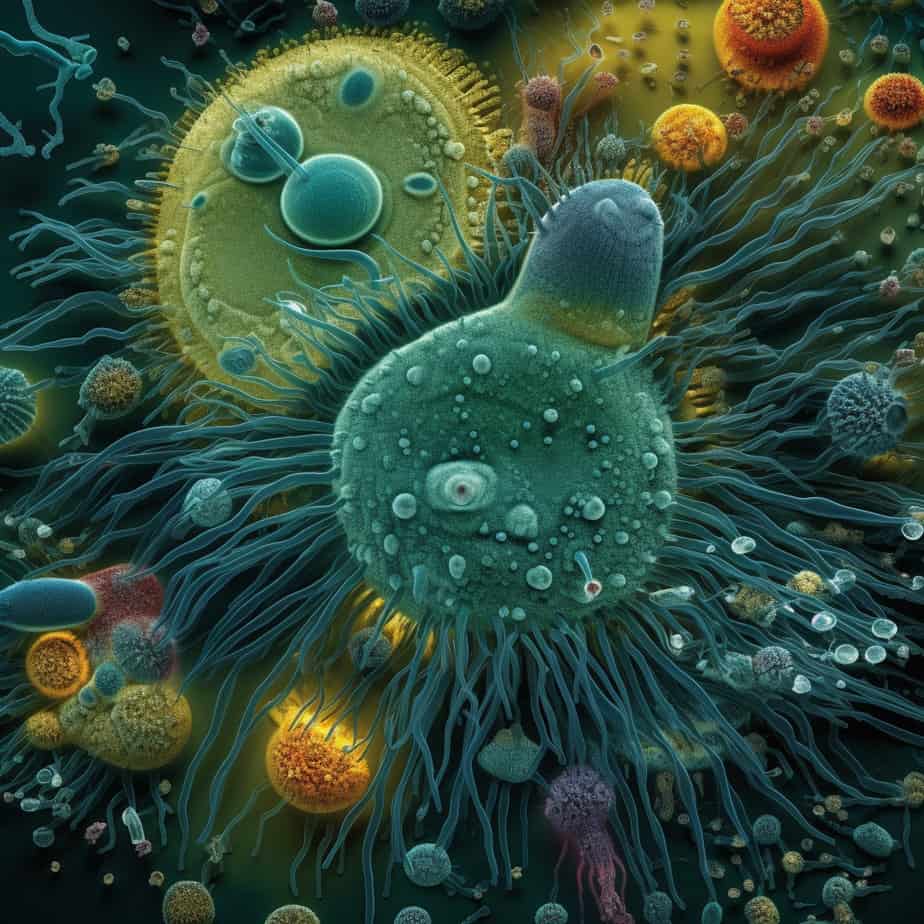
A. Definition and Role of Phytoplankton
Phytoplankton are microscopic organisms that play a crucial role in the marine food chain and the overall health of aquatic ecosystems. Derived from the Greek words “phyto” meaning plant and “plankton” meaning drifter, phytoplankton are essentially floating plants. These tiny organisms are primarily responsible for the process of photosynthesis in the ocean, converting sunlight and nutrients into organic matter.
Phytoplankton are considered the primary producers in the oceanic food web. They are capable of harnessing energy from the sun and converting carbon dioxide and nutrients into carbohydrates, proteins, and lipids. This process not only sustains the phytoplankton themselves but also provides a vital source of food for other organisms in the marine ecosystem.
The abundance and diversity of phytoplankton directly impact the health and productivity of the oceans. They serve as the foundation of the marine food chain, supporting the growth and survival of zooplankton and other organisms higher up in the trophic levels. Additionally, phytoplankton play a crucial role in nutrient cycling in the oceans, as they absorb and release essential elements such as carbon, nitrogen, and phosphorus.
B. Definition and Role of Zooplankton
Zooplankton, on the other hand, are tiny animals that drift with the currents in aquatic environments. Derived from the Greek words “zoo” meaning animal and “plankton” meaning drifter, zooplankton are an essential component of the marine food web. They are considered secondary consumers, as they feed on phytoplankton and other smaller zooplankton.
Zooplankton come in a wide variety of forms, ranging from microscopic organisms to larger, more complex organisms such as jellyfish and krill. They play a crucial role in maintaining the balance of the marine ecosystem by consuming phytoplankton and transferring energy up the food chain.
The diet of zooplankton primarily consists of phytoplankton, but they may also consume other organic matter and detritus present in the water. By feeding on phytoplankton, zooplankton help regulate the population of these primary producers, preventing excessive growth and maintaining a healthy balance in the ecosystem.
In addition to being an important food source for higher trophic levels, zooplankton also contribute to nutrient cycling in the oceans. When they consume phytoplankton, they release nutrients through excretion, which can then be utilized by other organisms. This process helps sustain the overall productivity and biodiversity of the marine environment.
In conclusion, phytoplankton and zooplankton are integral components of the marine ecosystem, with phytoplankton serving as the primary producers and zooplankton as the consumers. The interaction between these two types of plankton is vital for maintaining the balance and productivity of the oceanic food web. Understanding their roles and dynamics is crucial for comprehending the intricate relationships that exist within the vast world of marine biology.
The Dietary Habits of Phytoplankton
Phytoplankton, the microscopic organisms that inhabit aquatic ecosystems, play a crucial role in the marine food chain. As primary producers, they are responsible for converting sunlight, carbon dioxide, and nutrients into organic matter through the process of photosynthesis. While it is well-known that phytoplankton consume nutrients from their environment, the question remains: do phytoplankton eat zooplankton?
A. Do Phytoplankton Eat Algae?
When considering the diet of phytoplankton, it is important to understand that they are themselves a type of algae. Algae refers to a diverse group of photosynthetic organisms that can range from microscopic single-celled organisms to larger, multicellular seaweeds. Phytoplankton, specifically, are a type of algae that drift in the water column, harnessing sunlight to produce energy.
While phytoplankton do not directly consume other types of algae, they can compete with them for resources such as light and nutrients. In environments where resources are limited, phytoplankton may outcompete other algae species, leading to changes in the composition of the algal community.
B. Can Phytoplankton Eat Zooplankton?
Zooplankton, on the other hand, are small, drifting animals that feed on phytoplankton and other organic matter. They are considered secondary consumers in the marine food web, as they obtain their energy by consuming primary producers like phytoplankton.
While phytoplankton do not typically consume zooplankton, there are some exceptions. Certain species of phytoplankton, known as mixotrophs, have the ability to both photosynthesize and actively capture and ingest prey, including zooplankton. These mixotrophic phytoplankton have evolved to take advantage of the additional nutrients and energy obtained from consuming zooplankton.
C. Does Phytoplankton Eat Plankton?
Phytoplankton, being primary producers, are not known to directly consume other planktonic organisms. Instead, they rely on their ability to photosynthesize and convert inorganic substances into organic matter. This process is vital for nutrient cycling in the oceans and supports the growth of other organisms in the marine ecosystem.
The relationship between phytoplankton and zooplankton is more complex and involves a mutual dependence. Zooplankton, including copepods, krill, and other small animals, rely on phytoplankton as a primary food source. In turn, zooplankton play a crucial role in controlling the population of phytoplankton by grazing on them. This interaction helps maintain a balance in the oceanic food web and ensures the sustainability of both phytoplankton and zooplankton populations.
In conclusion, while phytoplankton do not typically consume zooplankton, there are exceptions in the form of mixotrophic species. The relationship between phytoplankton and zooplankton is one of mutual dependence, with phytoplankton serving as the primary producers and zooplankton acting as secondary consumers. This intricate interaction is vital for maintaining the health and biodiversity of our oceans.
The Dietary Habits of Zooplankton
Zooplankton, as the name suggests, are planktonic organisms that primarily feed on other planktonic organisms. They play a crucial role in the marine food chain and are considered secondary consumers in the aquatic ecosystem. One of the key questions that arises when studying zooplankton is whether they eat phytoplankton, which are the primary producers in the oceanic food web.
A. Does Zooplankton Eat Plankton?
Yes, zooplankton do consume plankton, including phytoplankton. Phytoplankton are microscopic organisms that undergo photosynthesis to produce their own food. They are the foundation of the marine food chain, and zooplankton are an important part of this chain as they feed on phytoplankton.
Zooplankton have evolved various feeding strategies to capture and consume phytoplankton. Some species of zooplankton are filter feeders, using specialized appendages to filter out and consume suspended particles, including phytoplankton, from the water. Others are actively predatory, hunting and consuming smaller zooplankton as well as phytoplankton.
B. How Many Phytoplankton Do Zooplankton Eat?
The amount of phytoplankton consumed by zooplankton can vary depending on several factors, including the species of zooplankton, their size, and the availability of phytoplankton in their environment. Studies have shown that zooplankton can consume a significant amount of phytoplankton, contributing to the nutrient cycling in the oceans.
The consumption rate of phytoplankton by zooplankton is influenced by the zooplankton‘s feeding behavior and metabolic rate. Some zooplankton species have high feeding rates and can consume a large number of phytoplankton cells in a short period. Others may have lower feeding rates but compensate by being more efficient in utilizing the phytoplankton they consume.
C. What Type of Phytoplankton Do Zooplankton Eat?
Zooplankton have a diverse diet and can consume various types of phytoplankton. The specific types of phytoplankton consumed by zooplankton depend on factors such as their feeding behavior, size, and the availability of different phytoplankton species in their environment.
Different species of zooplankton may have preferences for certain types of phytoplankton. For example, some zooplankton species prefer diatoms, which are a type of phytoplankton characterized by their silica shells. Other zooplankton species may consume dinoflagellates, which are another group of phytoplankton known for their ability to produce bioluminescence.
Overall, the interaction between phytoplankton and zooplankton is a vital component of the marine ecosystem. The consumption of phytoplankton by zooplankton helps regulate the abundance of phytoplankton populations and influences the distribution and diversity of marine species. Understanding the dietary habits of zooplankton and their relationship with phytoplankton is crucial for studying the intricate dynamics of the oceanic food web.
The Interplay Between Phytoplankton and Zooplankton
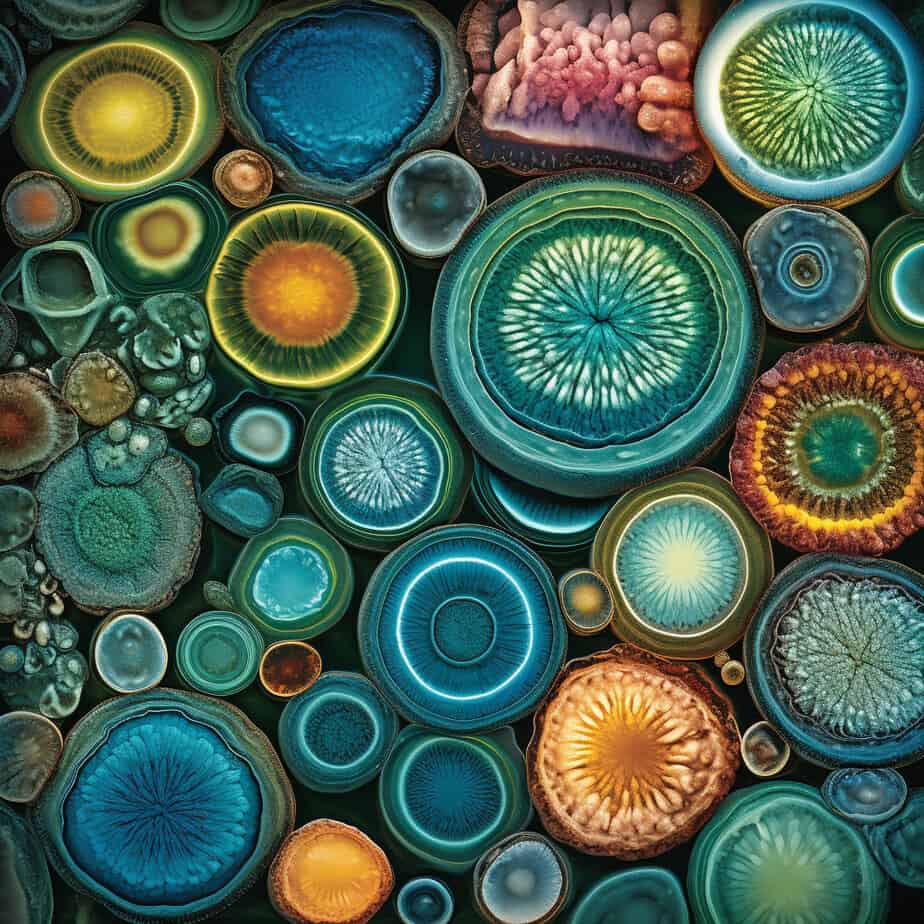
A. Can a Phytoplankton Eat Zooplankton?
In the intricate world of the aquatic ecosystem, the interdependence between different organisms is fascinating. Phytoplankton and zooplankton, two key players in the marine food chain, have a complex relationship that sustains life in our oceans. While phytoplankton and zooplankton may seem similar due to their planktonic nature, their roles and diets differ significantly.
Phytoplankton, microscopic organisms that float near the ocean‘s surface, are primary producers. They play a crucial role in the marine food web by harnessing energy from the sun through photosynthesis. These tiny organisms convert carbon dioxide and sunlight into organic matter, releasing oxygen as a byproduct. As primary producers, phytoplankton are the foundation of the oceanic food web, providing sustenance for a multitude of marine species.
On the other hand, zooplankton are secondary consumers, feeding on phytoplankton and other planktonic organisms. These microscopic animals come in various forms, including copepods, krill, and jellyfish larvae. They play a vital role in nutrient cycling in the oceans, as they consume phytoplankton and transfer energy up the food chain to larger predators.
While phytoplankton are not known for actively hunting or “eating” zooplankton, they indirectly contribute to the zooplankton‘s diet. Phytoplankton serve as a primary food source for zooplankton, providing the energy and nutrients they need to survive and thrive. In this sense, phytoplankton can be seen as the “prey” of zooplankton, although the relationship is more accurately described as a symbiotic interaction rather than predation.
B. Will Phytoplankton Eat Zooplankton?
Although phytoplankton do not actively consume zooplankton, there are instances where certain species of phytoplankton can indirectly affect zooplankton populations. Some species of phytoplankton produce toxins, known as harmful algal blooms (HABs), which can have detrimental effects on zooplankton and other marine organisms.
When HABs occur, the toxins released by the phytoplankton can accumulate in the tissues of zooplankton, making them unpalatable or even toxic to higher trophic level predators. This can disrupt the delicate balance of the marine food web and have cascading effects on the entire ecosystem. However, it is important to note that not all phytoplankton species produce harmful toxins, and the occurrence of HABs is relatively rare compared to the vast number of phytoplankton species in the oceans.
C. Do Phytoplankton Eat Zooplankton?
In summary, while phytoplankton do not actively consume zooplankton, they play a crucial role in sustaining zooplankton populations by serving as their primary food source. The relationship between phytoplankton and zooplankton is a fundamental aspect of the marine food web, ensuring the flow of energy and nutrients through different trophic levels.
Understanding the interplay between phytoplankton and zooplankton is essential for comprehending the intricate dynamics of marine ecosystems. These microscopic organisms, often overlooked due to their size, are vital for maintaining biodiversity and supporting the abundance of marine life that we marvel at. By appreciating the role of phytoplankton and zooplankton, we gain a deeper understanding of the delicate balance that exists within our oceans.
The Role of Plankton in the Larger Ecosystem
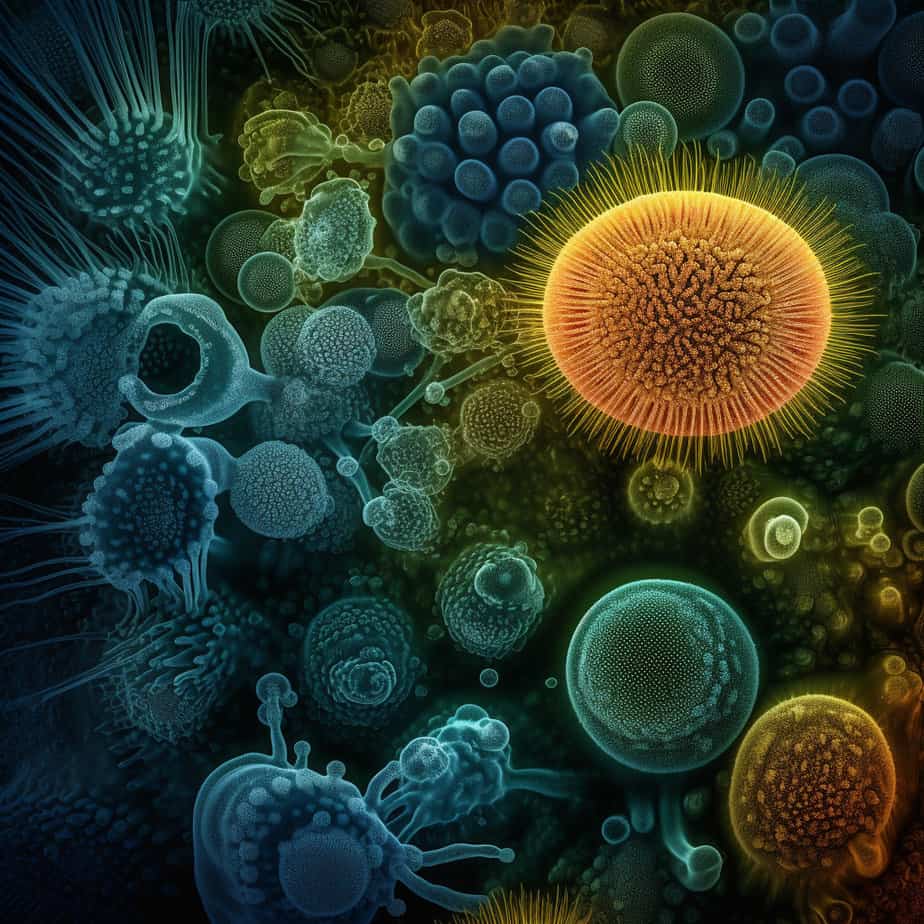
Plankton, the tiny organisms that drift in the world’s oceans, play a crucial role in the larger ecosystem. They form the foundation of the marine food chain, supporting the survival of countless other organisms. In this section, we will explore the relationship between phytoplankton and zooplankton, and their significance in the intricate web of life in aquatic ecosystems.
A. What Does Plankton Eat Zooplankton?
Phytoplankton, which are microscopic plants, serve as the primary producers in the oceanic food web. These tiny organisms harness the power of photosynthesis to convert sunlight and nutrients into energy. They are responsible for producing a significant portion of the Earth’s oxygen and are the main source of food for zooplankton.
Zooplankton, on the other hand, are small, animal-like organisms that drift along with the currents. They include a variety of organisms such as tiny crustaceans, larval fish, and jellyfish. While some zooplankton are herbivorous and feed directly on phytoplankton, others are omnivorous or carnivorous, consuming both phytoplankton and other zooplankton.
The consumption of zooplankton by phytoplankton is an essential part of the nutrient cycling in the oceans. As phytoplankton populations grow, they consume nutrients like nitrogen and phosphorus from the water. When zooplankton feed on phytoplankton, they release waste rich in these nutrients back into the water, making them available for other organisms. This process helps maintain the balance of nutrients in the marine ecosystem.
B. Why Do Plankton Eat Algae?
Phytoplankton, being the primary producers, rely on the process of photosynthesis to produce their own food. They absorb carbon dioxide and nutrients from the water, and with the help of sunlight, convert them into organic matter. This organic matter serves as a vital energy source for the growth and reproduction of phytoplankton.
Zooplankton, including herbivorous species, feed on phytoplankton for their nutritional needs. Algae, a type of phytoplankton, are particularly important in the diet of zooplankton. Algae are rich in carbohydrates, proteins, and lipids, providing essential nutrients for the growth and development of zooplankton.
The consumption of algae by zooplankton not only sustains their own populations but also helps regulate the abundance of phytoplankton. By grazing on algae, zooplankton control the growth of phytoplankton, preventing excessive blooms that can lead to harmful algal blooms (HABs). HABs can disrupt the balance of the ecosystem, causing oxygen depletion and even the death of marine organisms.
C. What Does Eat Plankton?
While phytoplankton are the primary producers in the marine food chain, they are not immune to predation. Various organisms, ranging from small invertebrates to large marine animals, consume plankton as part of their diet.
Zooplankton, especially carnivorous species, prey on other zooplankton, including herbivorous species that feed on phytoplankton. These interactions between different trophic levels in aquatic systems contribute to the transfer of energy and nutrients through the food web.
Additionally, larger marine organisms such as fish, whales, and seabirds also rely on plankton as a food source. They consume zooplankton directly or indirectly by feeding on smaller fish that have consumed zooplankton. This interconnectedness highlights the importance of plankton in supporting the biodiversity and functioning of marine ecosystems.
In conclusion, the relationship between phytoplankton and zooplankton is vital for the health and stability of the oceans. Phytoplankton serve as the primary producers, utilizing photosynthesis to convert sunlight and nutrients into energy. Zooplankton, in turn, feed on phytoplankton, playing a crucial role in nutrient cycling and regulating the abundance of phytoplankton. The consumption of plankton by various organisms, including zooplankton, fish, and larger marine animals, further demonstrates the significance of plankton in sustaining the diverse web of life in our oceans.
Phytoplankton, Zooplankton, and Marine Life
A. Do Whales Eat Phytoplankton or Zooplankton?
Whales are magnificent creatures that play a crucial role in the marine ecosystem. When it comes to their diet, different species of whales have varying preferences. While some whales are filter feeders, consuming vast amounts of tiny organisms, others are active hunters, targeting larger prey.
- Filter-Feeding Whales:
- Baleen Whales: These gentle giants, such as the blue whale and the humpback whale, rely on filtering massive quantities of water to obtain their food. They have baleen plates in their mouths, which act as a sieve to trap their prey. Baleen whales primarily feed on zooplankton, including small crustaceans like krill and copepods.
-
Gray Whales: Gray whales also fall into the filter-feeding category. They feed on benthic organisms, such as small crustaceans, worms, and other invertebrates, which they consume along with sediment.
-
Toothed Whales:
- Sperm Whales: Sperm whales have a diverse diet that includes giant squid, fish, and even smaller marine mammals. They are known to dive to great depths in search of their prey.
- Orca Whales: Orcas, or killer whales, are apex predators and have a varied diet. They are known to consume fish, squid, seals, sea lions, and even other whales.
B. Do Barnacles Eat Phytoplankton or Zooplankton?
Barnacles are small marine crustaceans that are often found attached to rocks, piers, and the hulls of ships. These sessile organisms have a unique feeding mechanism. While they are filter feeders, they primarily consume zooplankton rather than phytoplankton.
Barnacles extend feathery appendages called cirri into the water, which help them capture passing food particles. These cirri have tiny hair-like structures called setae, which create water currents that bring in food. The barnacles then filter out small zooplankton organisms, such as copepods and larval forms of other marine animals, from the water.
C. What Eats Phytoplankton?
Phytoplankton, as the primary producers in the oceanic food web, form the foundation of the marine ecosystem. They play a vital role in nutrient cycling and provide sustenance for a wide range of marine organisms.
-
Zooplankton: While phytoplankton are not known to directly consume zooplankton, zooplankton are a crucial part of the marine food chain. Zooplankton, including copepods, krill, and other small organisms, feed on phytoplankton as their primary source of nutrition. This creates a dynamic interaction between phytoplankton and zooplankton, with zooplankton acting as the primary consumers of phytoplankton.
-
Filter-Feeding Organisms: Various filter-feeding organisms, such as bivalves (clams, mussels, oysters), sponges, and some species of fish, consume phytoplankton. These organisms have specialized structures or mechanisms to filter out and consume the microscopic algae.
-
Some Marine Invertebrates: Certain marine invertebrates, such as sea urchins and some species of jellyfish, also consume phytoplankton. These organisms play a role in maintaining the balance of phytoplankton populations in their respective habitats.
Phytoplankton are essential for sustaining life in the oceans, providing energy and nutrients to a diverse range of marine species. Their role as primary producers is crucial in supporting the intricate web of life in our oceans. Conclusion
In conclusion, phytoplankton and zooplankton play crucial roles in the marine ecosystem. While phytoplankton are primary producers, using sunlight and nutrients to carry out photosynthesis and produce organic matter, zooplankton are consumers that feed on phytoplankton and other small organisms. Although phytoplankton are not known to directly consume zooplankton, they indirectly affect zooplankton populations through their availability as a food source. The relationship between phytoplankton and zooplankton is a delicate balance that helps maintain the overall health and productivity of the ocean. Understanding the dynamics between these two groups of organisms is essential for studying and managing marine ecosystems.
Frequently Asked Questions
Q1: Does zooplankton eat plankton?
Yes, zooplankton primarily feed on phytoplankton, which are a type of plankton. They are secondary consumers in the marine food chain, playing a crucial role in nutrient cycling in oceans.
Q2: How many phytoplankton do zooplankton eat?
The quantity of phytoplankton that zooplankton consume varies depending on the species and size of the zooplankton, as well as the availability of phytoplankton. On average, a zooplankton can eat its body weight in phytoplankton each day.
Q3: Can a phytoplankton eat zooplankton?
No, phytoplankton do not eat zooplankton. Phytoplankton are primary producers that generate their own food through photosynthesis. They are not equipped to consume other organisms.
Q4: Do phytoplankton eat zooplankton?
No, phytoplankton do not eat zooplankton. They are primary producers that use photosynthesis to convert sunlight, carbon dioxide, and nutrients into food.
Q5: What does plankton eat zooplankton?
Zooplankton, a type of plankton, primarily consumes phytoplankton. However, some larger zooplankton species can also eat smaller zooplankton.
Q6: Why do plankton eat algae?
Phytoplankton, a type of plankton, do not eat algae. They are similar to algae in that they both perform photosynthesis. Zooplankton, on the other hand, can consume algae as part of their diet.
Q7: Do whales eat phytoplankton or zooplankton?
Some species of whales, like the baleen whales, eat zooplankton and small fish. They do not eat phytoplankton.
Q8: What do phytoplankton and zooplankton eat?
Phytoplankton are autotrophs, meaning they produce their own food through photosynthesis. Zooplankton are heterotrophs and primarily consume phytoplankton and sometimes smaller zooplankton.
Q9: Do barnacles eat phytoplankton or zooplankton?
Barnacles are filter feeders, meaning they eat by straining food particles out of the water. They can consume both phytoplankton and zooplankton.
Q10: What type of phytoplankton do zooplankton eat?
Zooplankton eat various types of phytoplankton. The specific type often depends on the species of zooplankton and the availability of different phytoplankton species in the aquatic ecosystem.


